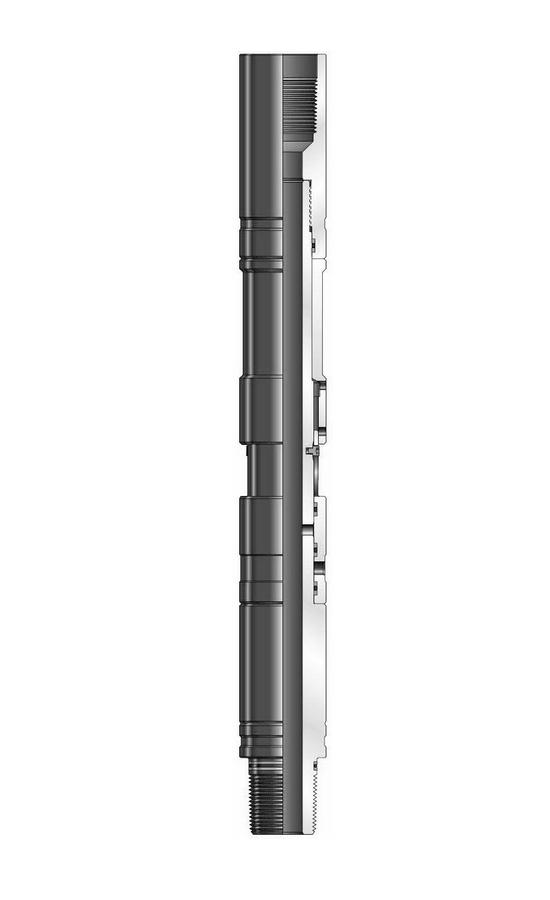Popular Name: Drain Valve
The Drain Valve consists of a ported body, sliding sleeve, and rotating nut, which controls the position of the sliding sleeve. The sleeve either covers or exposes the ports in the body of the valve. The Drain Valve is suitable for sour service at all temperatures. A drain collar and associated components are required when relieving pressure.
Features
1) Allows pressure trapped between two closed valves to be relieved in a controlled manner
2) Used to recover large volume fluid samples
Operation
The Drain Valve is installed between any two valves that may come out of the hole with pressure or fluid trapped between them. Pressure is relieved by installing the drain collar and drain nipples on the Drain Valve. Valves, lines, or sample bottles may be attached to the drain nipples depending on the desired disposition of the fluid in the string. After the drain collar assembly is attached, the ports in the tool are exposed by using a chain wrench or pipe wrench to rotate the drain nut, which moves the sliding sleeve.
When the ports in the sleeve are aligned with the ports in the body of the tool, the fluid may be drained.
It is also possible to trap a large volume fluid sample between two valves if a sample chamber of some kind (tubing, drill collar, etc.) is placed between the valves. In most cases, the Drain Valve would be run at the bottom of the sample chamber to facilitate transfer. This will not be a PVT sample.


1) Other sizes available on request.
2) Meets requirements of NACE-0175 (>175°F)
3) The values of tensile, burst, and collapse strength are calculated with new tool conditions.
4) Pressure rating is the differential pressure at the tool. (Differential pressure is the difference in pressure between the casing annulus and the tool ID.)
